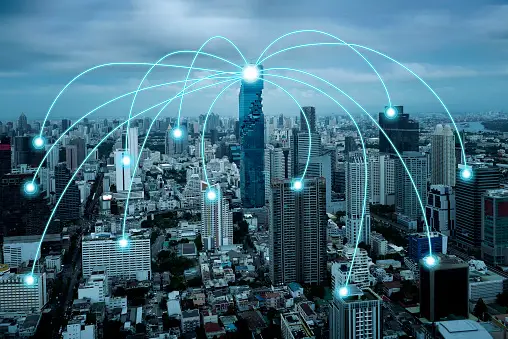Explore the critical impact of the internet on journalism’s credibility in our in-depth article. Uncover the truth about fake news, the importance of fact-checking, and strategies to ensure trustworthy reporting in the digital age. Stay informed and discerning in an era of information overload with our expert analysis.
Introduction
The social sharing of the pieces of information, which has been accelerated with the emergence of the digital environment, has become one of the main peculiarities of journalism. It was the internet which with its most involving and direct accessibility and coverage that has led to changes in the reporting, consuming and sharing of news. Nevertheless, the presence of such proposed change indicates that there has been a contemporary shift of fallowing journalism which has been coupled with the following complications, including the reliability of journalism.
Rise of fake news
With fake news as it is clear the new media is not an anomaly to be dealt with in a few years but a reality with the power to severely alter the way people learn news and interact with media in general. Unquestionably, the source most conducive to the sharing of memes is the Internet, which has become the primary driver of the misinformation effect and remains uncontrolled. Fake news feeds on the emotions of the readers, the headlines could be clicking and sharing even when the body content of the news is negative or untrue. This has led to a situation where, more often than not, the truth is hidden under a pile of lies and it becomes complex for a lay-man to differentiate between a fact and a falsehood.
Finally, one cannot fail to mention the impact as the following subtopics reveal the devastating effects of fake news. It has the potentials of changing public opinions and hence elections, organizing social disorder and instigation. It has, at times, produced real-life violence, especially in contexts that involve the spread of fake news on the sensitive topics causing communal clashes. Hoax news is therefore incorrect and therefore goes against the fundamentals of journalism, which is to enlighten the people with the correct information. Journalists have therefore shifted from competing with their counterparts in the industry to competing with fake news that prima facie grabs people’s attention.
Thus, the battle against fake news entails a combination of strategies. Reporters should not give in to the reckless reporting syndrome that mostly prevails in the media organizations when they give preference to speed rather than facts. It is also important to have for enhanced legislation that will act as a check on platforms that spread content. Another element is education; providing the population with the ability to differentiate between definitions and knowledge, baneful narratives can be better combatted and prevented from spreading though society. That is why one recognizes the need to combat the spread of fake news collectively to protect the quality of information on the Internet.
Finally, one cannot fail to mention the impact as the following subtopics reveal the devastating effects of fake news. It has the potentials of changing public opinions and hence elections, organizing social disorder and instigation. It has, at times, produced real-life violence, especially in contexts that involve the spread of fake news on the sensitive topics causing communal clashes. Hoax news is therefore incorrect and therefore goes against the fundamentals of journalism, which is to enlighten the people with the correct information. Journalists have therefore shifted from competing with their counterparts in the industry to competing with fake news that prima facie grabs people’s attention.
Thus, the battle against fake news entails a combination of strategies. Reporters should not give in to the reckless reporting syndrome that mostly prevails in the media organizations when they give preference to speed rather than facts. It is also important to have for enhanced legislation that will act as a check on platforms that spread content. Another element is education; providing the population with the ability to differentiate between definitions and knowledge, baneful narratives can be better combatted and prevented from spreading though society. That is why one recognizes the need to combat the spread of fake news collectively to protect the quality of information on the Internet.
The Role of Fact-Checking
The principle of fact-checking serves as the anti-dote of most news stories in the ever-fierce onslaught of fake news. It is a very precise task that requires dedication to the truth and the readiness to confront myths, even those that are generally considered to be true in a given society. Editors discover the lower layers of accusations and verify the relevance and reliability of sources for the sake of delivering the solely factual information and considering the nature of the truth. This is how professionalism is achieved, it is this commitment to ensure that the news provided is as accurate as possible that makes distinguish credible news providers in the jungle of vendors that is the internet today.
However, the process of fact-checking as we have seen is not without its difficulties. Virtual work environment has become a Sisyphean task to contend with because information flow generated daily is colossal. Some incorrect disinformation can go round the world within one second but the process of checking its authenticity consumes a lot of time and effort. Furthermore, fact-checkers are also entangled in political or political/ideological conflicts; their efforts may be denied or criticized by individuals or parties for the perceived opposite. Nevertheless, the role of fact-checking is still paramount as the aforementioned barriers make it difficult for people to stay informed. It remains indeed a profession that endures and always holds the truth as a mission in times of risk.
In this way, fact-checking practices could and should be continued, as their future is in innovation combined with the collaboration of different media outlets. Technological innovations including ‘AI’ and ‘Machine Learning,’ provide newer approaches to fast identification of negative narratives and their discrediting. Enhanced cooperation with tech giants, innovative platforms, and universities will also lead to the formation of a stronger and more capable defense against fake news. This way, working together, the fact-checking community means that this kind of work intensifies, which in turn makes people part of a more informed world and a healthier democracy.
However, the process of fact-checking as we have seen is not without its difficulties. Virtual work environment has become a Sisyphean task to contend with because information flow generated daily is colossal. Some incorrect disinformation can go round the world within one second but the process of checking its authenticity consumes a lot of time and effort. Furthermore, fact-checkers are also entangled in political or political/ideological conflicts; their efforts may be denied or criticized by individuals or parties for the perceived opposite. Nevertheless, the role of fact-checking is still paramount as the aforementioned barriers make it difficult for people to stay informed. It remains indeed a profession that endures and always holds the truth as a mission in times of risk.
In this way, fact-checking practices could and should be continued, as their future is in innovation combined with the collaboration of different media outlets. Technological innovations including ‘AI’ and ‘Machine Learning,’ provide newer approaches to fast identification of negative narratives and their discrediting. Enhanced cooperation with tech giants, innovative platforms, and universities will also lead to the formation of a stronger and more capable defense against fake news. This way, working together, the fact-checking community means that this kind of work intensifies, which in turn makes people part of a more informed world and a healthier democracy.
Effects on the credibility of journalism
In its finality, the credibility of journalism is premise to the qualities that make the occupation valuable to society. That is the very reason it sets it apart from the endless stream of opinions you are likely to come across scrolling through social media boards. Such credibility has been threatened by the existence of fake news, and the situation that fact-checking is mainly a reactive exercise. The public distrust media; this they began questioning media and seeking other sources of information. That crisis of self doubt presents a major danger to journalism as a profession, and as a democratic institution.
The availability of information to the public has been one of the blessings turned curse. However, it has facilitated the telling of a more comprehensive number of the narrative and opinion variety. On the other, it has complicated the way through which traditional journalism is able to sustain its dominance. Lack of clear distinction between professional and amateur journalism has brought in a lot of noise whereby premium is given to the extreme and gory details submerging the rational discussions. With politicians and even corporations requiring the press to constantly justify its credibility beyond the product it offers in the form of news, journalists are forced to earn their paycheck like they have never been forced to before, both through their output and through thoroughness.
The issue of regaining public trust in journalism will require the profession to be as stringent as possible and fully committed to the principles of the business. People have to be ready to stand for the truth as journalists do, ready to question the authorities and uncover corruption. It shows that news organizations have to invest in the production of investigations and have to stand behind the reporters hunting for the truth. In addition, there has to be a commitment to what is ethical, informing those in error and being responsible to the public. Thus, by stating these principles clearly, journalism can return to the society as the reliable part of its functioning.
The availability of information to the public has been one of the blessings turned curse. However, it has facilitated the telling of a more comprehensive number of the narrative and opinion variety. On the other, it has complicated the way through which traditional journalism is able to sustain its dominance. Lack of clear distinction between professional and amateur journalism has brought in a lot of noise whereby premium is given to the extreme and gory details submerging the rational discussions. With politicians and even corporations requiring the press to constantly justify its credibility beyond the product it offers in the form of news, journalists are forced to earn their paycheck like they have never been forced to before, both through their output and through thoroughness.
The issue of regaining public trust in journalism will require the profession to be as stringent as possible and fully committed to the principles of the business. People have to be ready to stand for the truth as journalists do, ready to question the authorities and uncover corruption. It shows that news organizations have to invest in the production of investigations and have to stand behind the reporters hunting for the truth. In addition, there has to be a commitment to what is ethical, informing those in error and being responsible to the public. Thus, by stating these principles clearly, journalism can return to the society as the reliable part of its functioning.
The Way Forward
The digital revolution has presented journalism with one of its greatest challenges yet: Keeping integrity even during the period when fake news is spreading across the country or even the entire world. Exiting the current information chaos means several strategies, which presents an elaborate approach that has to be employed by all the stakeholders in the ecosystem. Media literacy is central; it educates the public how to critically engage the media systems in place. Thus, by learning the ways to assess the credibility of the sources and demarcation between facts and opinions, the people can join the efforts to combat fake news. This convention suggests that institutions such as schools, colleges and universities, media houses, and even technology companies have the duty of positively influencing media literacy so that individuals act appropriately when interacting with content.
The fourth and final aspect is transparency, which is the final key area to address in order to rebuild trust in journalism. Media outlets should disclose how they developed and checked their facts, which decisions were made that may impact the potential content, etc. This trust translates to affecting errors, be it from the organization or individuals; correcting errors, and accessing damage control is important in building credibility. Moreover, there is the need for the journalists to interact with the audience and enlighten them on the process of reporting, as well as get information from the audiences. Openness of this nature not only lends efficiency to reliability but also brings about development in the relationship between the media and the consumers.
Another area of focus is adaptability and cross-functional integration in addressing the future of journalism. The world is changing with the speed of light and technology becomes the central point of that change, which means journalists have to be aware of what tools are available for them and their reports. Media and technology giants must converge efforts with fact-checking organizations and come up with unique approaches to solve the problem of the diffusion of fake news. For example, the use of artificial intelligence to identify fake news, or the development of projects, tasks, and campaigns among different outlets that are working towards encouraging the accurate dissemination of news affects media. When the journalism industry starts accepting the change and using it in a cooperative manner, then it can continue to serve the essence it has in the society.
The fourth and final aspect is transparency, which is the final key area to address in order to rebuild trust in journalism. Media outlets should disclose how they developed and checked their facts, which decisions were made that may impact the potential content, etc. This trust translates to affecting errors, be it from the organization or individuals; correcting errors, and accessing damage control is important in building credibility. Moreover, there is the need for the journalists to interact with the audience and enlighten them on the process of reporting, as well as get information from the audiences. Openness of this nature not only lends efficiency to reliability but also brings about development in the relationship between the media and the consumers.
Another area of focus is adaptability and cross-functional integration in addressing the future of journalism. The world is changing with the speed of light and technology becomes the central point of that change, which means journalists have to be aware of what tools are available for them and their reports. Media and technology giants must converge efforts with fact-checking organizations and come up with unique approaches to solve the problem of the diffusion of fake news. For example, the use of artificial intelligence to identify fake news, or the development of projects, tasks, and campaigns among different outlets that are working towards encouraging the accurate dissemination of news affects media. When the journalism industry starts accepting the change and using it in a cooperative manner, then it can continue to serve the essence it has in the society.
Conclusion
In conclusion, it is evident that the internet influences the credibility of journalism in a very complicated way and this factors should be rightfully taken into consideration. On the one hand, the identified challenges are serious, yet, on the other hand, they seem to be soluble. The potential and the duties are all in the scope of what we do during the act of sharing the knowledge. All the journalists should embrace the best practices by ensuring that that they practice accurate reports as well as being partial to any station or side. The management of these news organizations must dedicate ample funds in proper fact-checking and accuracy over the quantity of stories produced. Media companies must also embrace new opportunities for reaching the audience and conveying the story and this forms part of the media ecology.
The public also has a part to play when it comes to the defense of what has long been considered as journalism’s chief asset, that is credibility. People must learn more and be more selective of the news they receive and by being more discerning about what they read or watch on media platforms, people will be able to counter fake news. It is a work that has to be done by a group, generally, we have to be awake and be truthful. As the dynamics of the digital age keep changing, the measures in place to safeguard on journalism also need to adopt the same changes. In unity and commitment to these principles, a bright future is ahead for journalism to uphold the duty of providing the truth amidst the fog created by the online platform.
In conclusion, it is imperative to notice that on one hand, there is the potential for the development of a new generation of journalism, but on the other – there stands the threat that it will lose its mission and become a shadow of the previously existent phenomenon. Of course, there could not be a complete idea of the new opportunities of narration, spectators and the open-source world which web makes available in spite of its difficulties. By doing so, therefore, journalism can capitalize on these opportunities and meet them head-on to be more credible within the society than it has ever been. It is a constant process, and indeed an ongoing process which is beneficial not only for the democracies of the world and for the societies within these democracies.
The public also has a part to play when it comes to the defense of what has long been considered as journalism’s chief asset, that is credibility. People must learn more and be more selective of the news they receive and by being more discerning about what they read or watch on media platforms, people will be able to counter fake news. It is a work that has to be done by a group, generally, we have to be awake and be truthful. As the dynamics of the digital age keep changing, the measures in place to safeguard on journalism also need to adopt the same changes. In unity and commitment to these principles, a bright future is ahead for journalism to uphold the duty of providing the truth amidst the fog created by the online platform.
In conclusion, it is imperative to notice that on one hand, there is the potential for the development of a new generation of journalism, but on the other – there stands the threat that it will lose its mission and become a shadow of the previously existent phenomenon. Of course, there could not be a complete idea of the new opportunities of narration, spectators and the open-source world which web makes available in spite of its difficulties. By doing so, therefore, journalism can capitalize on these opportunities and meet them head-on to be more credible within the society than it has ever been. It is a constant process, and indeed an ongoing process which is beneficial not only for the democracies of the world and for the societies within these democracies.


























